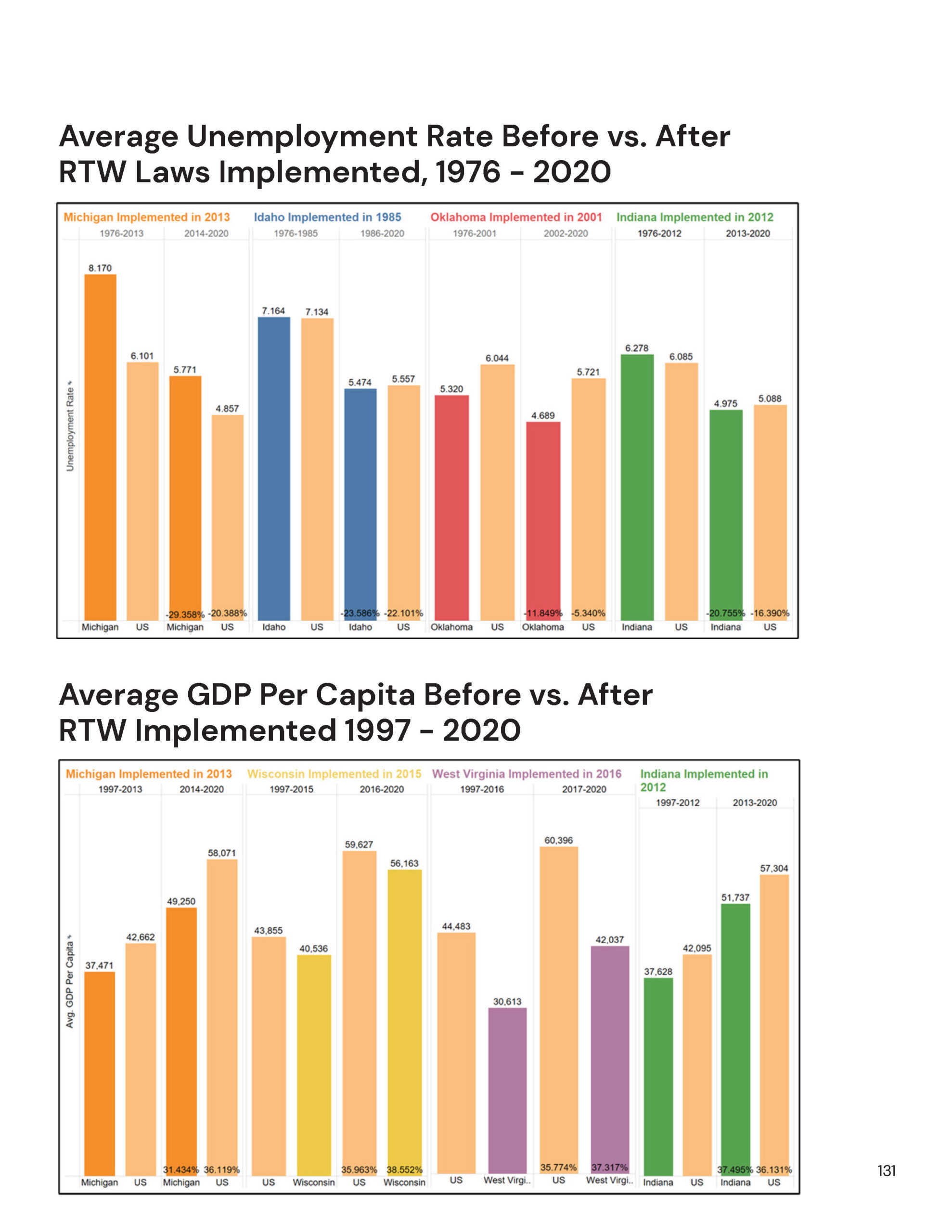Right to Work
The National Labor Relations Act (NLRA) was passed by Congress in 1935 just months after the U.S. Supreme Court struck down the National Industrial Recovery Act as unconstitutional. The language of the NLRA mirrored closely Section 7 of the National Industrial Recovery Act and many observers also expected the Supreme Court to strike down the NLRA. However, President Franklin Roosevelt’s support of a proposal to pack the Court influenced the Court to leave the NLRA intact.
In short, the NLRA created the National Labor Relations Board (NLRB) and charged it with supervising elections for union representation among private-sector workers. If a union wins an NLRB-supervised election with a simple majority of votes cast, it becomes the “exclusive bargaining agent” of all members of the bargaining group, regardless of whether each employee wishes to be represented by a union. Employers also must negotiate “in good faith” toward a collective bargaining agreement with the exclusive bargaining agent.
In the post-war era, perceived abuses by union leaders inspired Congress to pass the Taft-Hartley Act of 1947. This law amended the NLRA to give employees the right to refrain from participating in union activities and named several union tactics as “unfair labor practices” that could no longer be used against employees. It also allowed states to pass right-to-work (RTW) laws. An RTW law makes it illegal to require an employee to join a union and have dues withheld as a condition of employment. RTW laws are in force in 26 states.
Key Points
A person’s right to work is consistent with individual liberty. States without RTW laws effectively deprive workers of their First Amendment right to freedom of association. Workers may be required to join an organization against their will and have dues forcibly withheld from their paychecks to finance activities with which they may disagree.
Right-to-work states experience faster economic growth. Empirical evidence shows that RTW states experience faster growth in median household income, GDP per capita and corporate income tax receipts. Unemployment is also lower in RTW than non-RTW states.
Critics note states without RTW laws still boast larger median incomes on average. However, this is a legacy of historical economic performance. States with RTW laws began with much smaller median household incomes, but incomes have grown faster than in non-RTW states.
Americans prefer to live in right-to-work states. Americans often express their preferences by voting with their feet–moving to locales that match their desires. On the whole, RTW states have experienced much faster population growth than non-RTW states. The five fastest growing states, and eight of the top 10 fastest growing states, all have RTW laws.
Right-to-work laws inspire investment. Private-sector enterprises have demonstrated a preference for RTW states by choosing to invest more into facilities in those states. In 23 states, for instance, Japanese firms rank in the top three of foreign firms employing local workers. Only 7 of those states do not have RTW laws.
Nevada has demonstrated that RTW can be compatible with union participation. Nevada has the highest union participation rate among RTW states, with 12.4% of private-sector workers belonging to a union. This rate is higher than 10 of the 24 non-RTW states. If unions provide value to workers, then workers will join them even without coercion.
Recommendations
Preserve Nevada’s RTW status. Nevada was among the first wave of state’s to approve a RTW law, passing it as a ballot measure in the 1952 general election. The law has helped preserve economic dynamism in Nevada, provided incentives for growth and investment, and has proven compatible with large-scale union participation. Lawmakers should reject any proposal to repeal Nevada’s RTW laws.
Enshrine RTW into the state constitution. Among the 26 states with RTW laws, 10 have elevated these provisions into their state constitutions to enshrine the rights of workers and make these rights more difficult to overturn.

